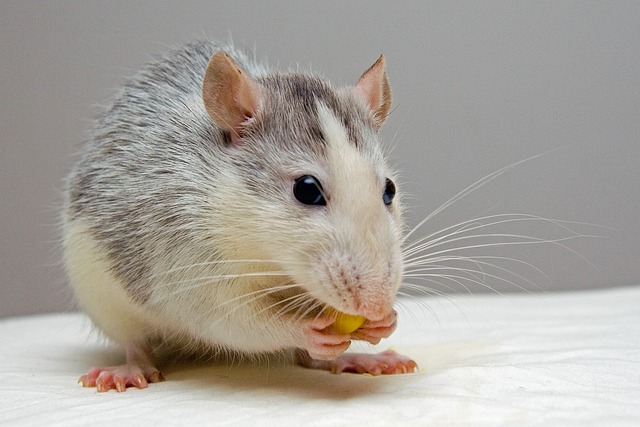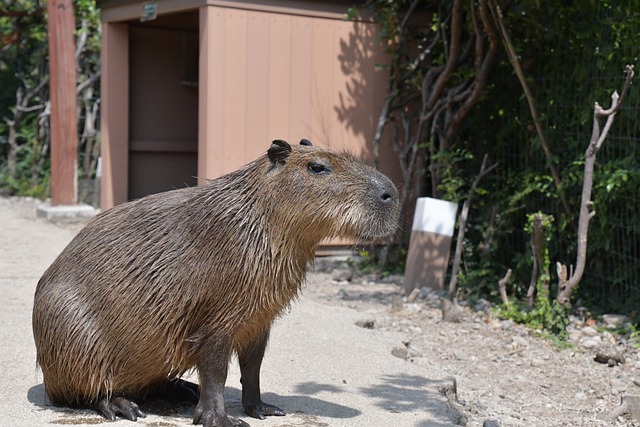Feeder rats, typically bred as food for snakes and other carnivorous pets, can make good pets under the right circumstances.
However, it’s important to remember that feeder rats are not bred for their temperament or health, so they may not have the same qualities as rats explicitly bred as pets.
Feeder rats may also have a shorter lifespan and be more prone to health issues due to their breeding and living conditions.
Additionally, feeder rats may not have been handled or socialized as much as pet rats, making them more skittish and difficult to handle.
If you’re considering getting a feeder rat as a pet, it’s important to research and ensure you’re prepared to provide proper care and socialization.
It’s also a good idea to consider adopting a rat from a reputable breeder or rescue organization specializing in pet rats.
Key Takeaways
- Feeder rats are a type of rat bred for use as food for other animals but can also be kept as pets.
- Pros of owning feeder rats include their ease of care and social nature.
- Cons of owning feeder rats include their potential for aggression and short lifespan.
Pros of Owning Feeder Rats
Feeder rats, also known as pet rats, are popular with many pet owners. They are intelligent, social, and affectionate animals that make great pets. This section will discuss some of the pros of owning feeder rats.
Easy to Care For
Feeder rats are relatively easy to care for, making them an excellent choice for first-time pet owners. They require a cage, food, water, and bedding, which can all be purchased at a pet store.
Feeder rats are also very social animals and enjoy interacting with their owners, which makes them an excellent choice for families with children.
Low Maintenance Cost
Feeder rats are also relatively low-maintenance pets, which makes them an excellent choice for pet owners on a budget. They require minimal grooming, and their food and bedding are relatively inexpensive.
Additionally, feeder rats are less prone to health problems than other pets, requiring fewer visits to the veterinarian.
In conclusion, feeder rats are great pets for those looking for an intelligent, social, and low-maintenance animal. They are easy to care for and require minimal grooming and veterinary care.
Cons of Owning Feeder Rats
Short Lifespan
One of the major cons of owning feeder rats is their short lifespan. Feeder rats typically live for only 1-2 years, which can be disappointing for pet owners looking for a long-term companion. This short lifespan can also be emotionally difficult for owners who become attached to their rats.
Health Concerns
Feeder rats are often bred in large quantities and kept in unsanitary conditions, leading to health concerns for the rats and their owners.
Feeder rats are more prone to diseases and illnesses, such as respiratory infections and tumors, which can be expensive and time-consuming to treat.
Additionally, feeder rats, such as salmonella, may carry diseases that can be transmitted to humans.
Owners of feeder rats must also be aware of the potential health risks associated with feeding their rats. Feeder rats are often fed a diet of low-quality food, which can lead to malnutrition and health problems in the rats.
Additionally, feeder rats may carry parasites, such as mites and lice, which can be challenging to eradicate and can cause discomfort for the rats.
While feeder rats can make good pets for some people, there are several cons to consider before bringing one into your home.
It is essential to carefully research and consider the potential health risks and emotional toll of owning a feeder rat before deciding.
Feeding and Caring for Feeder Rats
Dietary Requirements
Feeder rats require a balanced diet to maintain their health. A diet that is high in protein and low in fat is recommended. Commercial rat food is a good option as it contains all the necessary nutrients. However, it is essential to supplement their diet with fresh fruits and vegetables.
It is recommended to feed feeder rats twice a day. The food provided should be enough to last them for the day, but not so much that they become overweight. Overfeeding can lead to health problems such as obesity and heart disease.
Water should always be available to feeder rats. A water bottle attached to the cage is the best option as it prevents spillage and contamination.
Housing Needs
Feeder rats require a clean and spacious living environment. A cage at least 2 feet long, 1.5 feet wide, and 1.5 feet tall is recommended for one or two rats. The cage should have multiple levels and include hiding spots and toys for mental stimulation.
Bedding material such as shredded paper or wood shavings should be provided for the rats to nest in. The bedding should be changed at least once a week to prevent the buildup of bacteria and odors.
It is important to keep the cage clean and free of waste. Feeder rats are prone to respiratory infections, so a clean environment is crucial for their health.
In summary, feeder rats require a balanced diet high in protein and low in fat. Fresh fruits and vegetables should be provided as a supplement. They need a clean and spacious living environment with multiple levels and hiding spots.
Bedding material should be provided and changed at least once a week. Water should always be available to them.
Behavior and Interaction
Temperament
Feeder rats are typically intelligent, curious, and social animals. They are known to be playful and active and can be quite affectionate with their owners. However, like any animal, individual temperament can vary.
Some rats may be more shy or aggressive than others, and choosing a rat with a good temperament is vital if you plan to keep it as a pet.
It is important to note that male rats tend to be more laid back and relaxed, while females may be more energetic and playful. Providing your rat with plenty of socialization and enrichment is essential to keep them happy and healthy.
Social Needs
Feeder rats are highly social animals and should be kept in pairs or groups whenever possible. They enjoy playing and grooming each other and can become lonely and depressed if kept alone for extended periods.
It is essential to provide your rats with plenty of space to play and explore, as well as toys and other forms of enrichment.
When interacting with your rats, it is important to be gentle and patient. Rats may take some time to warm up to new people, but they can become very affectionate pets with time and patience.
Handling your rats regularly is essential to keep them socialized and comfortable with human interaction.
Overall, feeder rats can make great pets for the right owner. They can be intelligent, curious, and affectionate companions with proper care and socialization.
Making the Decision
When considering adopting a feeder rat as a pet, there are several factors to consider. It’s essential to make an informed decision considering the rat’s and the owner’s needs. Here are some things to consider before adoption:
Considerations Before Adoption
First and foremost, it’s essential to consider whether or not a feeder rat is the right pet for you.
Rats are social animals that require daily interaction and care, so they may not be the best choice for someone frequently away from home or unable to provide the necessary attention.
Additionally, rats have a relatively short lifespan of 2-3 years, so potential owners should be prepared for the emotional toll of losing a pet relatively quickly.
It’s also important to consider any allergies or other health concerns that may be affected by owning a rat. Some people may be allergic to rat fur or dander, and rats can carry diseases that can be transmitted to humans.
It’s essential to consult with a doctor before adopting a rat if there are any concerns about allergies or other health issues.
Finding a Good Breeder
If, after considering the above factors, you decide that a feeder rat is the right pet for you, it’s essential to find a reputable breeder. A good breeder will provide healthy, well-socialized rats bred for good temperament and health. Some things to look for in a breeder include:
- Clean and well-maintained living conditions for the rats
- A willingness to answer questions and provide information about the rats’ lineage and health history
- A focus on breeding for good temperament and health rather than just quantity
- A willingness to allow potential owners to meet the rats before adoption
By considering these factors and finding a good breeder, potential rat owners can make an informed decision and provide a happy and healthy home for their new pet.
Understanding Feeder Rats
What Are Feeder Rats?
Feeder rats are bred and raised to be used as food for other animals, such as snakes and birds of prey. They are typically sold in pet stores and online as a food source for these animals. Feeder rats are usually bred for their size and health and are often fed a diet high in protein to ensure they are healthy and strong.
While feeder rats are not typically kept as pets, some choose to keep them as pets. However, it is essential to note that feeder rats are not bred for their temperament or suitability as pets, and as such, they may not make the best pets for everyone.
Feeder Rats Vs. Pet Rats
Feeder rats and pet rats are two different types of rats. Pet rats are bred specifically to be kept as pets, and as such, they are typically more friendly and sociable than feeder rats. Pet rats are also bred for their appearance, and as a result, they come in a wide variety of colors and patterns.
On the other hand, feeder rats are not bred for their temperament or appearance. They are bred solely for their size and health, so they may not be as friendly or sociable as pet rats. Feeder rats are also typically sold much lower than pet rats, as they are not considered valuable.
In summary, while feeder rats can be kept as pets, they are not typically bred for their suitability as pets, and as such, they may not make the best pets for everyone. If you are looking for a pet rat, it is generally recommended that you choose one specifically bred for that purpose.









